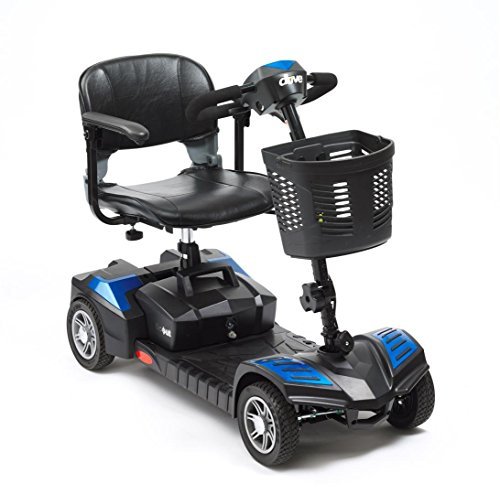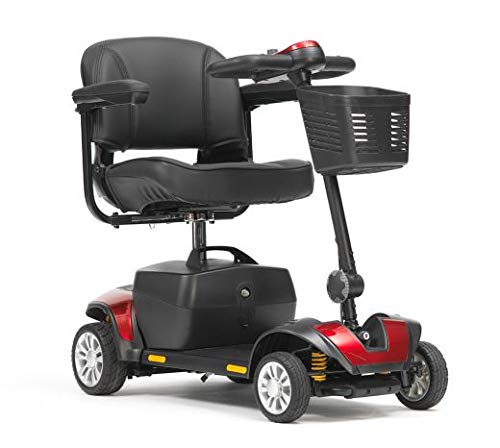5 Killer Quora Answers To Mobility Scooters Road Or Pavement
페이지 정보

본문
 Can I Take My Mobility Scooter on the Road?
Can I Take My Mobility Scooter on the Road?While mobility scooters are intended to travel on pavements it is crucial that riders be considerate of pedestrians and give them right of way. They must also adhere to any parking restrictions or local rules and regulations.
Most scooters are designed to operate on roads or sidewalks, and some models capable of climbing up steep hills. However, this will depend on the particular design and engine strength of the scooter.
pavement mobility scooters uk
Mobility scooters have become a popular option for people with mobility issues. They are designed to provide an efficient and secure way to navigate a wide variety of terrains. They can be used on terrains that aren't normally associated with vehicular traffic such as wet floor in a supermarket aisle. However, one of the most frequent questions that first-time mobility scooter pavement scooter owners have is whether or not they are able to take their scooters on the road.
The answer to this question is yes, as long as the scooter is limited to four mph when it is on pavement. To legally operate a scooter on the road, it must first be registered with the Driver and Vehicle Licensing Agency. To to register a mobility scooter for use on the road you must complete the form V55/4 to register the new or used scooter and return it to the DVLA.
A valid driving licence is also required to operate a motor scooter on the road. In addition, it is recommended to take an instructor-led safety course that will teach you how to operate the device properly. This will help you avoid accidents and traffic violations which could result in penalties or even jail.
Pavement scooters are typically built using a flexible, layered bituminous pavement mobility scooter. This type of construction employs a surface course that is named. The binder course and the base course provide the bulk of structural support, whereas the surfacing provides an excellent ride surface that is waterproof. The paving materials differ depending on the type of roadway's use and the local climate.
In the UK, the Highway Code states that you should ride a scooter within sight of a kerb that has been dropped. Wear a helmet, and abide by all traffic laws. In addition, you must always be considerate of pedestrians and make sure you yield to them when passing. Never operate a scooter in a bike lane or on the sidewalk. This could cause serious injuries or even death. It is also an excellent idea to wear bright clothes and carry an emergency kit in the event of an accident or breakdown.
Rough Terrain
There are a number of rough terrains that require specially-designed vehicles to traverse. These include playgrounds, muddy or sandy roads and roads with stones. These are places where mobility scooters could cause harm to themselves as well as pedestrians. It is essential to keep your scooter and make sure you use appropriate tyres when driving on these roads. If you are looking to travel over rough terrains, you should consider buying a Mobility Scooter with a speed of 6-8mph. These scooters have tough tires and are able to handle the terrain.
Although mobility scooters can be used on the pavement however, it is important to keep in mind that they're not made to travel as fast as a car. It is illegal to drive on a motorbike unless it's a Class 3 Mobility Scooter.
The reason that municipalities restrict road mobility scooters is because they could cause traffic issues and disrupt the free flow of traffic. This is why they are usually only allowed on pedestrian walkways and sidewalks. In some areas, it's illegal to use a scooter inside a bicycle lane, as it can disrupt the flow of traffic.
You should always give pedestrians the right to use the right of way when operating a scooter along the sidewalk. Wear reflective clothing and switch on your lights. In addition, it is an excellent idea to ride your scooter close to the curb or at the edge of the sidewalk in order to avoid swerving. It is also a good idea to stay clear of crossing the road at an intersection and use the possibility of a dropped kerb.
The rough terrain can be a challenge for many people, but with the right scooter, it isn't a problem. The top scooters are made to be able to travel across a variety of terrains and provide the freedom you require. You can find the right scooter by consulting an excellent supplier or dealer. They can even put in accessories to suit your lifestyle and preferences.
Sidewalks
Some jurisdictions have specific guidelines regarding the use of mobility wheelchairs on sidewalks. These regulations classify scooters as pedestrian assistive devices, and outline the rules and standards for equipment and sidewalk navigation. By adhering to these guidelines, scooter users can ensure that they are operating their scooters in a safe and legal manner.
Scooter owners should not only adhere to all traffic laws, but also keep a reasonable speed limit. They should be aware of pedestrian safety and allow the right of way to pedestrians when they pass them. Furthermore, scooters should be equipped with functional lights and reflectors to make them more noticeable in low-light conditions. Helmets are sometimes encouraged to increase safety.
Mobility scooters can be utilized on sidewalks in the UK as long as they are properly maintained and operated at a reasonable speed. However, it is not recommended to exceed 4 mph on pavements as this is more than the average pace for pedestrians, and could create the risk of injury. It is recommended that scooters stay clear of steep slopes and instead use kerbs that are dropped whenever possible.
It is also important to note that most pavements have uneven surfaces and could also be filled with obstructions such as rocks or other debris. This could cause damage to the scooter and increase the chance of accidents or injuries. Therefore, it is essential to check the vehicle regularly to identify any potential issues and carry repair kits in the event of an emergency.
Although the majority of roads are suitable for mobility scooters, there are some that are not. Avoid areas with grass, for example, as they can cause traction issues and cause a loss of balance. This is due to the fact that most scooters have a very low ground clearance and could be damaged or tangled in uneven or soft terrain.
In certain areas it is also illegal to drive on the sidewalk in certain situations. It is not uncommon for sidewalks to be blocked due to construction or other factors that can cause harm. In these cases it is essential to contact local authorities for more information.
Roads
There are different laws for mobility scooters based on where you reside. In Kansas, for example it is unlawful to drive an electric mobility scooter on highways or roads. Instead, they should only be used to travel on sidewalks or streets that are in the neighborhood. There are some rules that all scooter riders must follow, regardless of the location they reside. They must adhere to traffic signals and signs and wear a helmet and keep the speed limit. They must also be courteous to pedestrians crossing the street.
While there are no specific legal requirements for eyesight however it is essential that mobility scooters pavement scooter drivers are able to see clearly enough to be able to drive. It is important to test your eyesight regularly to ensure it meets the standards. It is also recommended that the mirrors on your scooter are set correctly and that you can see a car's registration number from 12-15 feet.
It is essential to follow all traffic laws and yield to pedestrians using a scooter along sidewalks and roads as well as bike routes. This is especially crucial when navigating in crowded areas where a mobility wheelchair could cause inconvenience or blockage to other pedestrians. scooter on pavement owners should be careful not to block pedestrians' paths by riding their scooters up stairs or in narrow areas in order to avoid the risk of injury to pedestrians.
It is also a good idea to use a horn if necessary to alert other road users of your presence. Mobility Scooters Road Or Pavement scooters move much slower than other vehicles, and may not be visible in certain lighting conditions. It is important to wear a reflective jacket, and make sure that your scooter is maintained and illuminated for visibility.
 If you're seeking a pavement scooter that offers both comfort and efficiency, you should consider a Class 2 mobility scooter. They are smaller and lighter and can reach speeds of up to four speeds. If you're planning to travel for long distances, however you'll need something with more power, such as a class 3 mobility scooter. This type is able to be driven on road or pavement and has the maximum speed of eight miles per hour.
If you're seeking a pavement scooter that offers both comfort and efficiency, you should consider a Class 2 mobility scooter. They are smaller and lighter and can reach speeds of up to four speeds. If you're planning to travel for long distances, however you'll need something with more power, such as a class 3 mobility scooter. This type is able to be driven on road or pavement and has the maximum speed of eight miles per hour.- 이전글Why You Should Be Working With This 3kw Multi Fuel Stove 24.09.02
- 다음글20 Trailblazers Leading The Way In Best Robot Vacuum For Carpet 24.09.02
댓글목록
등록된 댓글이 없습니다.